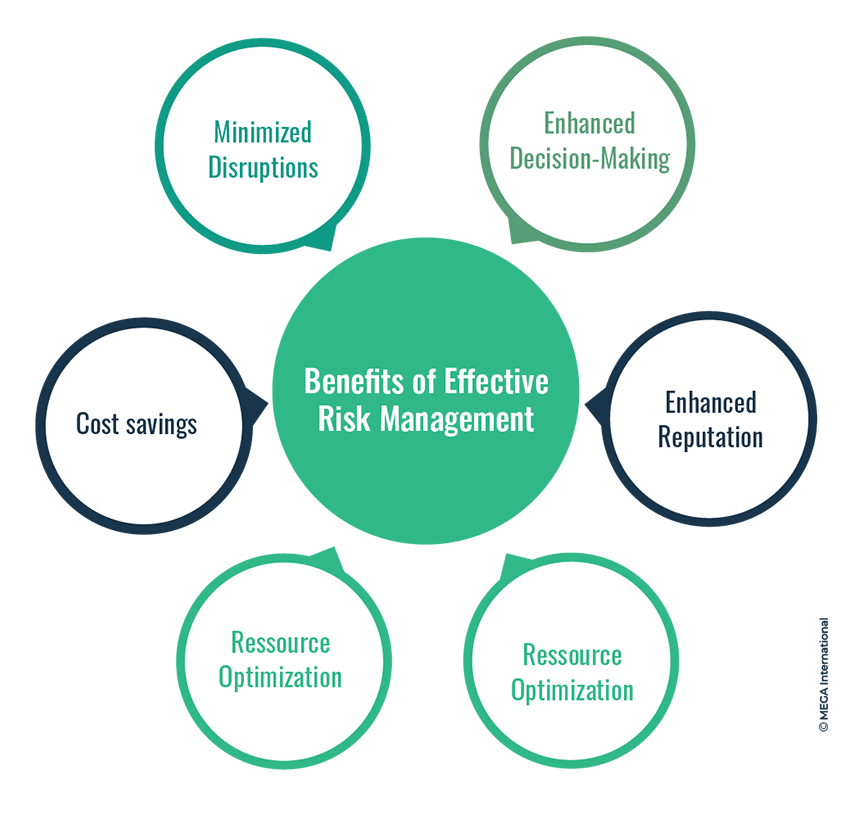Enhancing Operational Efficiency Through the Importance of Risk Management
Enhancing Operational Efficiency Through the Importance of Risk Management
Blog Article
Exploring the Value of Risk Management for Effective Decision-Making Strategies
In the detailed globe of service, Risk Management emerges as an important aspect in the decision-making procedure. The capacity to determine potential risks and possibilities, and plan as necessary, can mean the distinction between success and failing.
Recognizing the Principle of Risk Management
Risk Management, a crucial element in decision-making, is usually misunderstood or oversimplified. Risk Management includes regimented and organized approaches, making use of information and insightful assessments. From monetary uncertainties, lawful obligations, critical Management errors, to accidents and natural catastrophes, it attends to numerous risks - importance of risk management.
The Function of Risk Management in Decision-Making Processes
In the realm of calculated preparation and service operations, Risk Management plays an essential duty in decision-making processes. It helps in recognizing potential threats and unpredictabilities that might affect the achievement of company objectives. By tracing these threats, business can create approaches to mitigate their effect, making certain business continuity and security. Risk Management hence becomes a crucial tool in decision-making, helping leaders to make informed options based on an extensive understanding of the threats included. It motivates a proactive method, making it possible for companies to prepare and expect for possible future situations. This dramatically lowers the possibility of adverse repercussions, advertising more reliable and efficient decision-making techniques. Therefore, Risk Management serves as an important element in the decision-making procedures of any company.

Just How Risk Management Improves Strategic Preparation
In the context of calculated planning, Risk Management plays a critical duty. Starting with the identification of potential risks, it better expands to the execution of Risk reduction actions. The function of Risk Management is vibrant yet not fixed, as it demands continuous monitoring and adjusting of techniques.
Identifying Possible Risks

Implementing Risk Mitigation
Risk reduction strategies can range from Risk avoidance, Risk transfer, to run the risk of reduction. Each method should be tailored to the specific Risk, considering its possible influence and the company's Risk resistance. Effective Risk mitigation requires a deep understanding of the Risk landscape and my site the prospective effect of each Risk.
Monitoring and Adjusting Strategies
Though Risk reduction is an important action in calculated preparation, continual monitoring and change of these techniques is just as essential. It additionally offers a chance to review the success of the Risk Management procedures, enabling modifications to be made where required, more enhancing strategic preparation. Tracking and changing Risk Management methods is a crucial part for enhancing an organization's resilience and critical planning.
Situation Researches: Successful Risk Management and Decision-Making
In the globe of service and money, effective Risk Management and decision-making often serve as the pillars of flourishing enterprises. These cases highlight the worth of sharp Risk Management in decision-making procedures. These instances underscore the important function of Risk Management in critical decision-making.
Tools and Strategies for Reliable Risk Management
These tools, such as Risk signs up and warmth maps, aid in determining and examining possible threats. Risk action strategies, an essential part of Risk Management, entail accepting, preventing, transferring, or mitigating risks. With these devices and strategies, decision-makers can navigate the facility landscape of Risk Management, consequently helping with informed and effective decision-making.
Future Patterns in Risk Management and Decision-Making Approaches
As we check out the vast landscape of Risk Management, it ends up being apparent that the tools and strategies made use of today will remain to progress. Future fads aim in the direction of an enhanced click for source dependence on modern technology, with expert system and machine knowing playing considerable roles. These innovations will allow organizations to anticipate potential dangers with higher precision and make more informed choices. Furthermore, there will certainly be an expanding emphasis on strength, not simply in handling risks however also in jumping back from damaging circumstances. Last but not least, the concept of Risk culture, where every member of an organization understands and entailed in Risk Management, will certainly get a lot more prestige. These trends herald an even more positive and inclusive method in the direction of Risk Management and decision-making.
Final thought

Risk Management therefore ends up being a crucial device in decision-making, aiding leaders to make educated options based on an extensive understanding of the risks included. Risk reduction techniques can vary from Risk avoidance, Risk transfer, to take the chance of reduction (importance of risk management). Effective Risk mitigation calls for a deep understanding of the Risk landscape and the click this link prospective influence of each Risk. Risk reaction techniques, an essential component of Risk Management, involve approving, avoiding, transferring, or mitigating threats. The principle of Risk society, where every member of an organization is aware and included in Risk Management, will acquire more prestige
Report this page